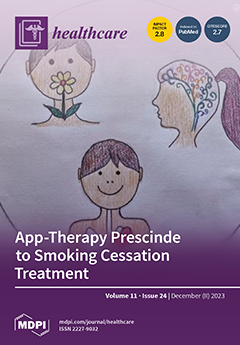Background: The COVID-19 pandemic accelerated the adoption of telehealth services. Informal caregivers provide vital support to family and friends. Studying telehealth among informal caregivers is crucial to understanding how technology can support and enhance their caregiving responsibilities, potentially enhancing telehealth services for them as well as their patients. The present study aims to nationally investigate telehealth utilization and quality among informal caregivers. Methods: This cross-sectional investigation employed the 2022 Health Information National Trends Survey (HINTS) dataset. Informal caregivers, telehealth variables (utilization, good care, technical problems, convenience, and concerns about infection exposure), and sociodemographic factors (age, gender, race/ethnicity, income, education, health insurance, and census regions) were identified based on questions in the survey. Weighted multivariable logistic regression models were employed to calculate odds ratios (ORs), 95% confidence intervals (CIs), and
p-values. Results: Significant disparities in telehealth utilization were detected among informal caregivers (N = 831), when telehealth users were compared to non-users. Those aged 50–64 (OR = 0.36, 95% CI = 0.20–0.65) and 65+ (OR = 0.40, 95% CI = 0.21–0.74) had significantly lower odds of using telehealth than those aged 35–49. Men had significantly lower odds of telehealth utilization (OR = 0.47, 95% CI = 0.25–0.87). Black caregivers compared to Whites had significantly lower odds (OR = 0.49, 95% CI = 0.24–0.99), while health insurance increased odds (OR = 5.31, 95% CI = 1.67–16.86) of telehealth utilization. Informal caregivers who used telehealth were more likely to be perceived as good telehealth caregivers if they had no telehealth technical issues compared to caregivers who had (OR = 4.61, CI = 1.61–13.16;
p-value = 0.0051) and if they were from the South compared to the West (OR = 2.95, CI = 1.18–7.37,
p-value = 0.0213). Conclusions: For the first time, to the best of our knowledge, we have nationally investigated telehealth utilization and quality among informal caregivers. Disparities in telehealth utilization among informal caregivers are evident, with age, gender, race, and health insurance being significant determinants. Telehealth quality is significantly influenced by technical problems and census regions, emphasizing the importance of addressing these aspects in telehealth service development for informal caregivers.
Full article






